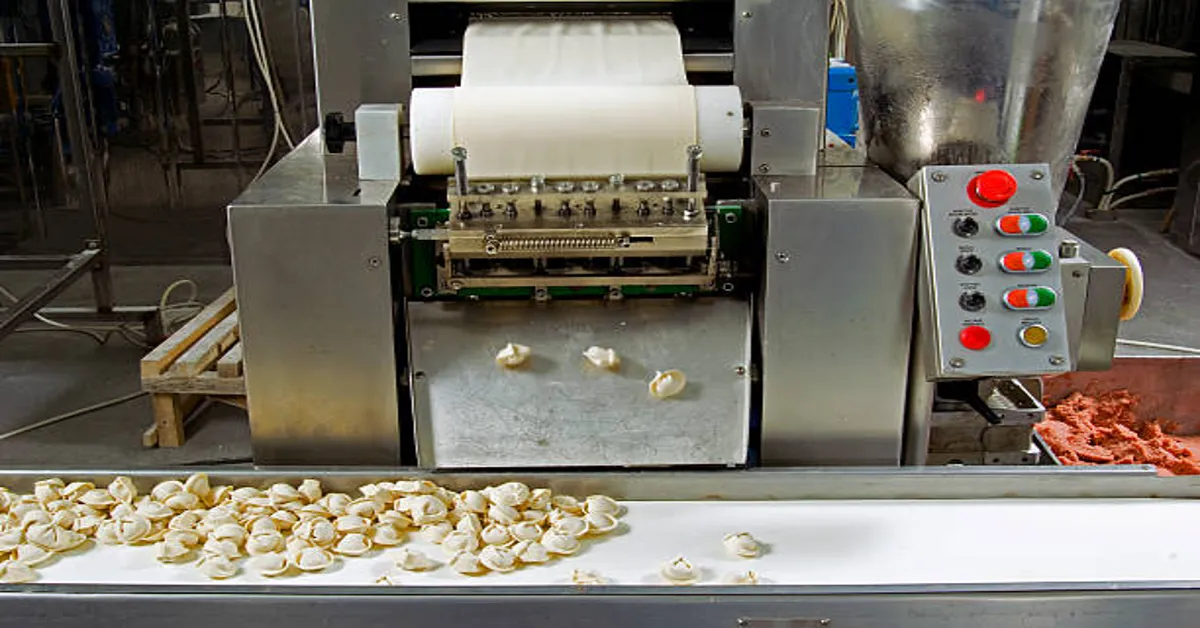When it comes to Italian cuisine, pasta reigns supreme. Among the most beloved types of pasta are tortellini—those small, ring-shaped bundles of joy typically filled with meats, cheeses, or vegetables. Making tortellini by hand is an age-old craft, involving precision, patience, and skill. But in modern kitchens and commercial settings, this process has been revolutionized by a machine known as the tortellinatrice. This equipment is designed specifically for forming tortellini efficiently while maintaining the integrity and authenticity of this iconic Italian dish.
In this article, we’ll delve into everything you need to know about the tortellinatrice: what it is, how it works, its applications, different models, benefits, and factors to consider when buying one. Whether you’re a small restaurant, a pasta artisan, or a large-scale manufacturer, this guide will help you understand the role a tortellinatrice can play in your pasta production process.
What is a Tortellinatrice?
A tortellinatrice is a specialized pasta machine designed to automate or semi-automate the process of making tortellini. The name comes from the Italian word “tortellini” combined with the suffix “-atrice,” which denotes a machine or device that performs an action. Hence, a tortellinatrice is literally a “tortellini-maker.”
While traditional tortellini is crafted by hand—rolling out fresh pasta sheets, cutting them into circles or squares, adding filling, folding, and sealing—this machine significantly streamlines the process. Depending on the type and complexity of the machine, it can handle all or most of these steps with great speed and precision.
Tortellinatrici (plural) are commonly used in artisanal pasta shops, industrial food processing plants, restaurants, and even some large domestic kitchens that focus on high-volume production. They come in various sizes and functionalities, from compact tabletop models for small batches to large-scale industrial machines capable of producing thousands of tortellini per hour.
Components and Mechanism of a Tortellinatrice
Understanding how a tortellinatrice works requires a look at its core components. Though specific features vary depending on the brand and model, most tortellinatrici share a common architecture:
1. Pasta Sheet Feeder
This part of the machine accepts the rolled-out pasta sheets. In some models, the pasta sheets are prepared separately and fed manually, while in more advanced models, a built-in dough roller flattens the dough to the desired thickness.
2. Filling Hopper
A funnel or compartment is used to hold the filling mixture, whether it’s cheese, meat, or vegetables. The hopper dispenses precise amounts of filling onto the pasta sheet at regular intervals.
3. Folding and Cutting Unit
This is the heart of the tortellinatrice. Once the filling is deposited, this unit folds the pasta sheet over the filling, shapes it into the classic tortellini ring, and cuts it precisely. The accuracy and speed of this component determine the quality and consistency of the output.
4. Output Conveyor
The finished tortellini are collected on a tray or conveyor belt, ready for packaging, cooking, or freezing. Some machines may even include an integrated flour dusting mechanism to prevent the tortellini from sticking to each other.
Types of Tortellinatrici
Tortellinatrici vary widely in size, automation level, and intended use. Here are the main categories:
1. Manual Tortellinatrice
These are simple, often crank-based devices that assist in shaping tortellini but still require significant manual input. Ideal for small businesses or home use.
2. Semi-Automatic Tortellinatrice
These machines automate several steps such as filling and cutting but require the operator to feed pasta sheets manually. They offer a balance between efficiency and craftsmanship, suitable for small to medium-sized businesses.
3. Fully Automatic Tortellinatrice
Fully automated machines handle every aspect of the tortellini-making process, from rolling the dough to depositing filling, folding, cutting, and even aligning the finished product. These are designed for high-volume production environments.
4. Multifunctional Pasta Machines
Some advanced pasta machines come with interchangeable molds or attachments that can produce various pasta shapes, including tortellini. They offer flexibility but may not specialize in tortellini to the same degree as a dedicated tortellinatrice.
Applications and Industries
The tortellinatrice is used across a wide range of sectors:
- Artisan Pasta Shops: To scale up production without compromising quality.
- Restaurants: To meet high customer demand with consistent results.
- Food Manufacturing Plants: For mass production and distribution.
- Catering Services: For preparing large quantities of fresh pasta in minimal time.
- Gourmet Home Kitchens: For pasta enthusiasts and chefs aiming for perfection.
Advantages of Using a Tortellinatrice
The popularity of tortellinatrici isn’t just due to convenience. There are multiple tangible benefits associated with these machines:
1. Time Efficiency
A well-calibrated machine can produce hundreds or even thousands of tortellini per hour, reducing the time and labor needed compared to manual production.
2. Consistency
Uniform size, shape, and filling distribution ensure that every piece meets quality standards, crucial for commercial sales and customer satisfaction.
3. Labor Savings
Automating the tortellini-making process means fewer personnel are needed, leading to lower labor costs in the long term.
4. Customization
Many models allow you to adjust parameters like pasta thickness, filling quantity, and tortellini size, enabling creative flexibility.
5. Hygiene and Safety
Food-grade stainless steel and enclosed systems help maintain hygiene and minimize contamination risks, a must for commercial kitchens and factories.
How to Choose the Right Tortellinatrice
Buying a tortellinatrice is an investment, and several key factors should be considered to ensure you choose the right model for your needs:
1. Production Capacity
Estimate your daily or weekly tortellini demand. Smaller manual or semi-automatic machines may suffice for artisan shops, while fully automatic models are necessary for mass production.
2. Type of Filling
Check whether the machine supports the type of filling you plan to use. Some are better suited for dry fillings like ricotta and herbs, while others can handle moister blends.
3. Pasta Dough Compatibility
The machine should work well with the type and consistency of pasta dough you prefer. Some machines offer dough rollers, while others require pre-rolled sheets.
4. Ease of Cleaning
Look for models with detachable parts and stainless steel construction to simplify cleaning and comply with hygiene standards.
5. Durability and Maintenance
High-quality machines are made from durable materials and designed for longevity. Check for warranty options and availability of spare parts.
6. Footprint and Space
Measure the available space in your kitchen or facility. Tortellinatrici come in compact sizes as well as large industrial models, so choose accordingly.
7. Budget
Prices can vary significantly. Entry-level manual machines might cost a few hundred dollars, while industrial models can run into the tens of thousands. Match your choice with your production goals and financial capacity.
Cleaning and Maintenance Tips
To ensure optimal performance and long lifespan, regular cleaning and maintenance are crucial. Here are some best practices:
- Daily Cleaning: Disassemble removable parts and wash them with warm, soapy water. Rinse thoroughly and dry before reassembling.
- Sanitize After Use: Especially in commercial settings, use food-grade sanitizing solutions to kill bacteria and maintain hygiene.
- Lubricate Moving Parts: Periodically apply food-safe lubricant to gears and rollers if recommended by the manufacturer.
- Inspect for Wear: Check for any signs of damage or wear, particularly in the cutting and folding units, and replace parts as needed.
- Follow Manufacturer Guidelines: Always refer to the user manual for specific cleaning and maintenance instructions.
Future Trends in Tortellinatrice Technology
As culinary technologies evolve, the tortellinatrice is also witnessing innovations aimed at making pasta production even more efficient and sophisticated. Some emerging trends include:
- Smart Automation: Machines equipped with digital touchscreens and programmable recipes.
- AI Integration: Use of sensors and AI to detect inconsistencies in dough thickness or filling volume.
- Eco-Friendly Designs: More manufacturers are focusing on energy-efficient motors and recyclable materials.
- Modular Components: Machines that allow users to switch between tortellini and other filled pasta types like ravioli or cappelletti.
Environmental Considerations
Manufacturers and users alike are becoming more conscious of environmental impact. Choosing a machine that consumes less energy, has recyclable parts, or uses biodegradable lubricants can make your production process more sustainable. Additionally, reducing food waste through precision filling mechanisms is another way these machines contribute to responsible production.
ALSO READ: Silk Investments Africa Bond: Redefining Sustainable Growth in Emerging Markets
FAQs About Tortellinatrice
1. What is the main difference between a tortellinatrice and a raviolatrice?
The primary difference lies in the type of pasta they are designed to produce. A tortellinatrice is specifically built to create tortellini, which are typically smaller, ring-shaped, and individually folded. A raviolatrice, on the other hand, produces ravioli, which are often square or round and sealed on all sides. Some machines can be adapted to make both, but their mechanisms and molds differ.
2. Can I use any kind of filling in a tortellinatrice?
Most tortellinatrici can handle a variety of fillings such as cheese, meat, and vegetables. However, the texture and moisture content of the filling matter significantly. Fillings should not be too runny, as that can cause leakage or poor sealing. It’s best to consult your machine’s manual to understand its filling compatibility.
3. Is a tortellinatrice suitable for home use?
While most tortellinatrici are built for commercial purposes, there are compact manual or semi-automatic models designed for home chefs or small-scale operations. If you’re passionate about fresh pasta and regularly make tortellini, investing in a home-friendly tortellinatrice can save time and enhance quality.
4. How much does a tortellinatrice typically cost?
Prices vary widely based on size, features, and brand. Entry-level manual machines may start around $500, while semi-automatic models range between $2,000 to $10,000. Industrial automatic tortellinatrici can exceed $50,000 depending on production capacity and technology.
5. What materials are tortellinatrici made from?
Most high-quality machines are constructed from food-grade stainless steel, which is durable, corrosion-resistant, and easy to clean. Internal components such as rollers and nozzles are also made of metal or food-safe plastic, depending on the manufacturer.









